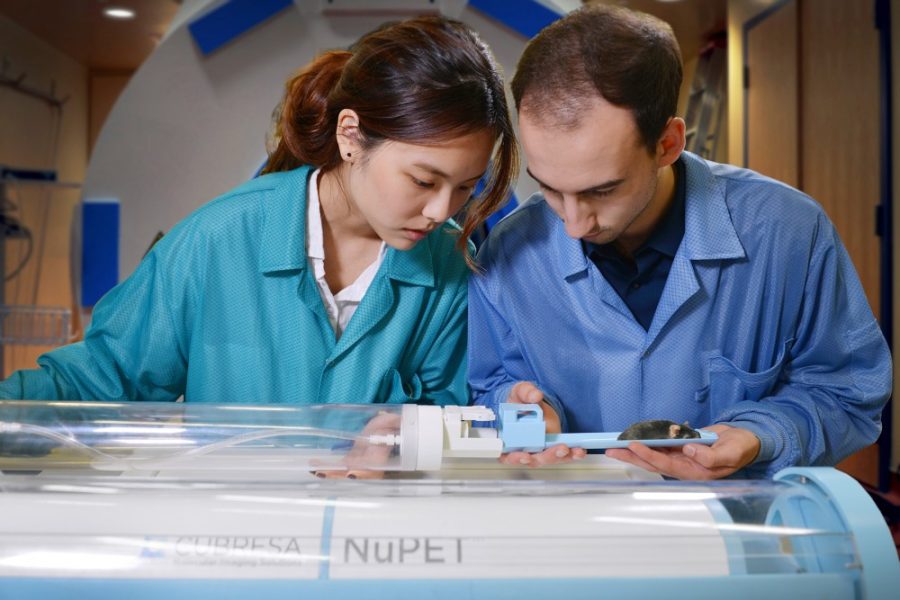The UA’s Department of Medical Imaging has been selected as the first U.S. institution to have new imaging technology that will help identify the characteristics of different diseases.
The UA is collaborating with Cubresa Inc., the medical imaging company that made the device called NuPET. The system is set to help doctors observe their patient using Position Emission Tomography and Magnetic Resonance Imaging simultaneously, which has never been done before.
The two methods work together to bring greater precision when diagnosing patients, like those who may have a potentially cancerous tumor. The MRI method shows how the tumor reacts to glucose, a nutrient said to make cancerous tumors grow, while the PET image analysis would help by showing how much glucose it is actually consuming.
Marty Pagel, associate professor of medical imaging and director of the Contrast Agent Molecular Laboratory, said using only a single imaging technology makes for a hard diagnosis, which is difficult because of changing bodies.
“We have a problem in the radiology field that we very often just get one type of image and then make a diagnosis,” Pagel said. “If I get an image and it has a certain kind of brightness, it’s really difficult to say, ‘oh that’s because of the acid content or because of the enzymes or because of another property.’”
Julio Cárdenas-Rodríguez, a research assistant professor of biomedical engineering, said the objective is precision.
READ: UA and Banner receive $43 million research grant from NIH
“The ultimate goal of all these things is specificity,” he said. “You cannot get that alone with PET or alone with MRI—you have to combine them to be more specific.”
Cárdenas-Rodríguez also said that the new technology will allow the cancer center to receive a patient’s image quickly because they can acquire it simultaneously.
“I would say the UA’s medical imaging capability and reputation is well known in the country,” said Cubresa President and CEO George Abe. “While the hospital is focused on providing care to the regional population, the university’s researchers, like [Pagel] are known for driving new technolog—new capabilities in molecular imaging—especially associated with cancer.”
This research partnership between the UA and Cubresa Inc. started at a medical trade show a couple years ago that Pagel and Cubresa attended.
“From the get-go Marty was a real innovative guy and had a vision for how he wanted to combine PET and MRI imaging technology to work on the cancer imaging techniques he’s developing in his lab,” said Michael Simpson, Cubresa marketing director. “We had a dialogue for about a year before things got more busy and serious.”
Simpson said Cubresa learned of his need for combining the technologies and began further discussions and ultimately entered into a research collaboration arrangement with the university with Pagel being the key lead on the UA side.
READ: UA scientists help update national valley fever guidelines
Pagel said he likes to work with experienced companies that have a research-oriented leadership team and have been in the laboratory before.
“As an industry partner we collaborate a lot with these leading scientists to help develop and validate new, future medical applications,” Abe said.
It’s the collaboration like that of the UA and Cubresa Inc. that creates new technologies, according to Abe. He said the implementation of the technology is just the first step to a longer partnership with one important goal.
“Even though the installation was an important milestone, this collaboration is ongoing and will be multi-year,” Abe said. “It’s all about saving lives.”
Follow Shaq Davis on Twitter.








